Introduction
At Advanced Fertility Center of Chicago, patients can undergo a donor egg cycle using fresh or frozen eggs. Individuals or couples might choose to use donor eggs for to a variety of reasons, such as same-sex male couples wanting to start a family, patients with non-viable eggs due to age or medical conditions, or patients wishing to avoid passing on genetic disorders.
Fresh donor eggs are obtained through a process called egg retrieval. These eggs are fertilized immediately in the lab in a process called in vitro fertilization (IVF). When using frozen donor eggs, eggs are obtained similarly but are frozen through a process called vitrification on the day of egg retrieval without fertilization with sperm. Future IVF will be performed on these eggs once thawed.
AFCC has provided fresh donor egg cycles since 1997 and frozen donor egg cycles since 2014.
Fresh vs. Frozen Donor Eggs
Although fresh donor egg cycles are still a popular option for many patients, more and more patients are turning to frozen donor eggs. In 2022, 985 fresh donor egg cycles and 2,817 frozen donor egg cycles were reported in the US1. If you are deciding between the use of fresh and frozen eggs during your egg donation cycle, the following are relevant considerations:
- Success Rates. Fresh donor eggs have a similar success rate to frozen donor eggs. In 2022, fresh donor eggs had a 38.7% live birth rate and frozen donor eggs had a 38.9% live birth rate in the US1. At AFCC in 2022, our live birth rates for fresh donor eggs and frozen donor eggs, respectively, were 66.70% and 48.8%2.
- Egg Retrieval. If a patient chooses to undergo a fresh donor egg cycle, there may potentially be more eggs available for treatment. At AFCC, our average egg collection number from one donor is 17, and these eggs are ready for fertilization to create embryos immediately (“fresh”) or at a future date (“frozen”). Embryos are created by a fresh egg donation or can be frozen for future pregnancy by recipients, potentially allowing several pregnancies from one egg donation cycle. Frozen eggs are usually provided in batches of 6 at AFCC. The majority of eggs, but not all, will successfully survive the freeze-thaw process. The 2022 national live birth rate for frozen donor eggs was 38.9%, and the national live birth rate for frozen embryos from donated eggs was 45.8%1. At AFCC in 2022, it was 48.8% vs. 52.5% for frozen embryos from donated eggs2.
- Embryo Creation Opportunity. The more eggs that are available, the more embryos may be created, thus increasing the overall potential for a successful conception and even several conceptions. Therefore, more embryos are likely to result from fresh compared with frozen egg donation. This is relevant primarily for recipients planning on having more than one child.
- Donor Egg Availability & Diversity. A major advantage of using frozen donor eggs is that little to no waiting is typically needed for use in a cycle. Eggs are typically available for use immediately through AFCC’s egg bank or through our partnership with MyEggBank3, the largest network of donor egg banks in North America. There is also no need for synchronization of the cycle between the egg donor and recipient.
- Cost Per Treatment Per Cycle. At AFCC, the cost per treatment cycle with frozen eggs is approximately $19,500 compared to fresh eggs, which is approximately $30,000.
Whether you choose fresh or frozen donor eggs, both may improve your chances of a successful conception through IVF. To discuss your optimal treatment or for any donor egg questions, reach out to us today to speak with a physician at AFCC!
Key Sources:
SART: Donor Eggs Fresh Or Frozen?
1SART 2022 National Summary Report










